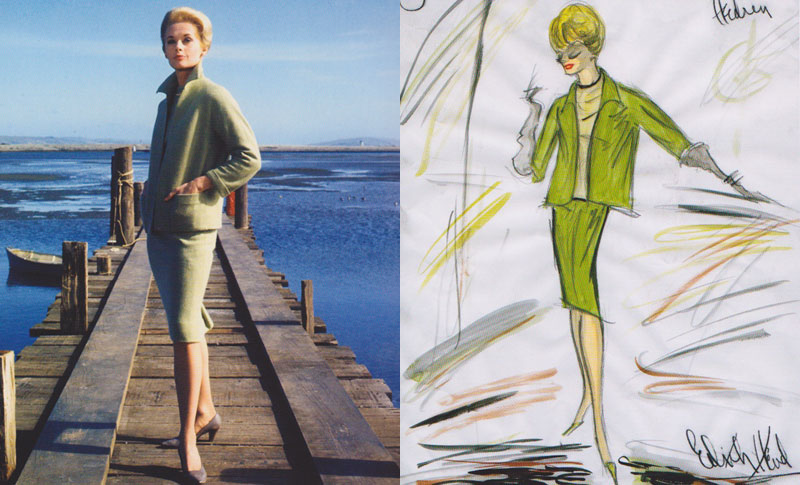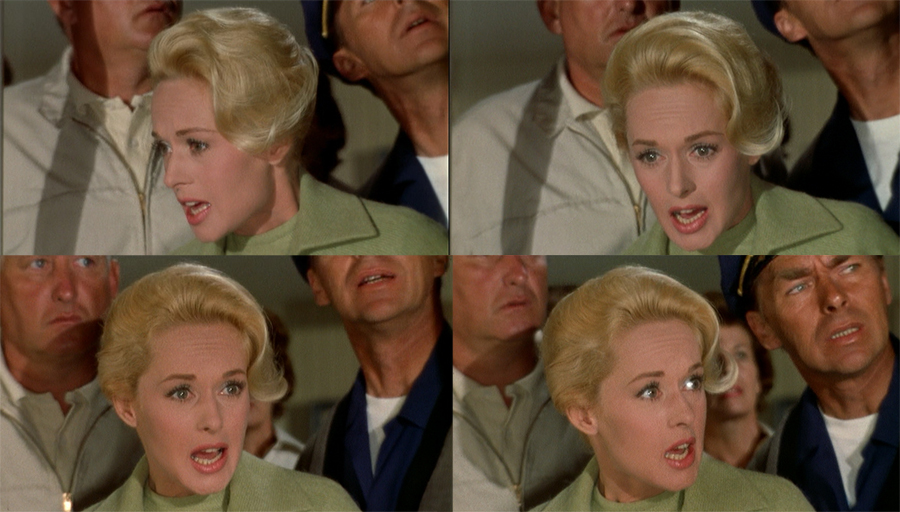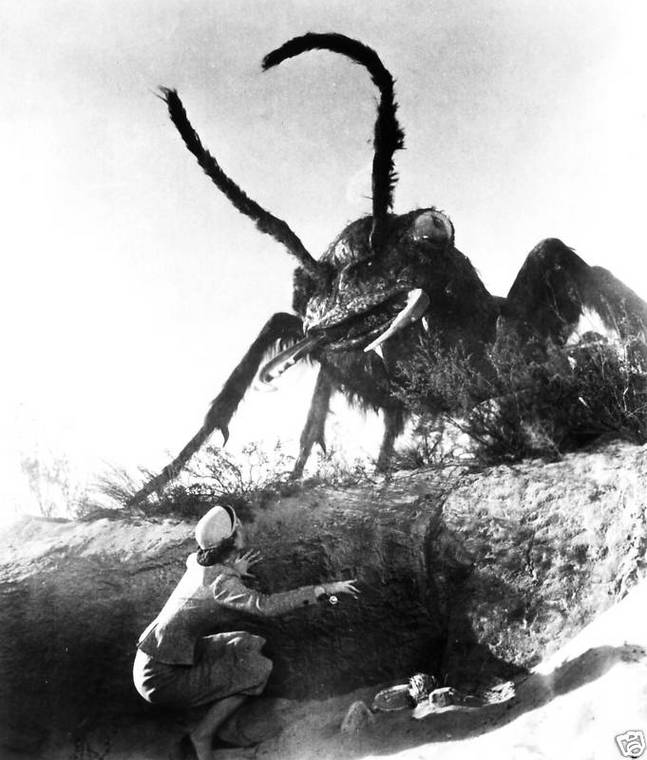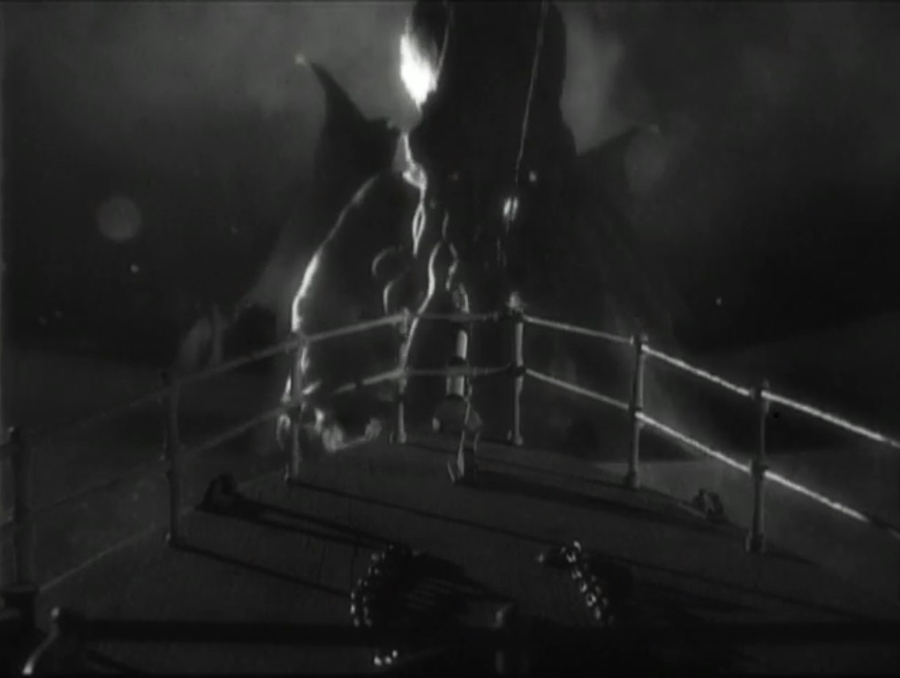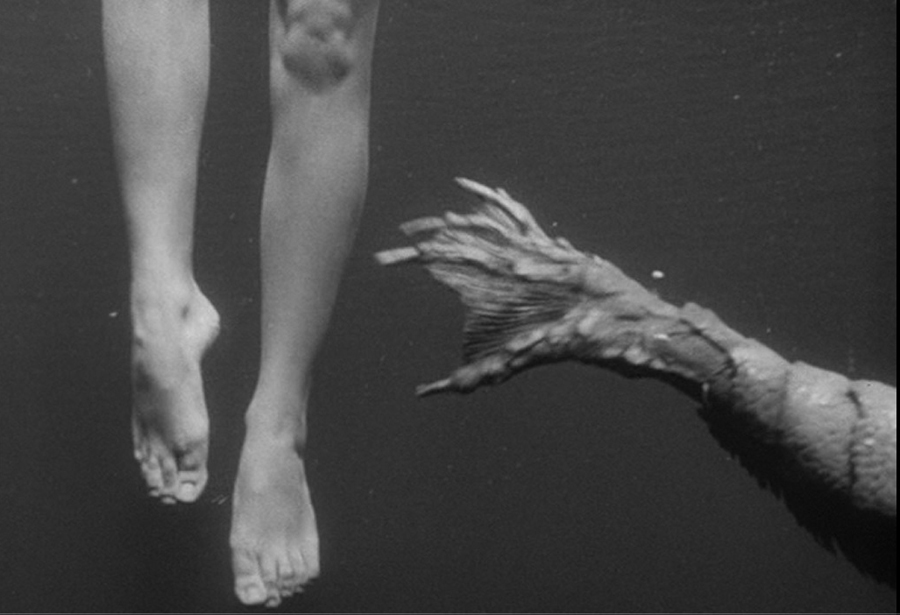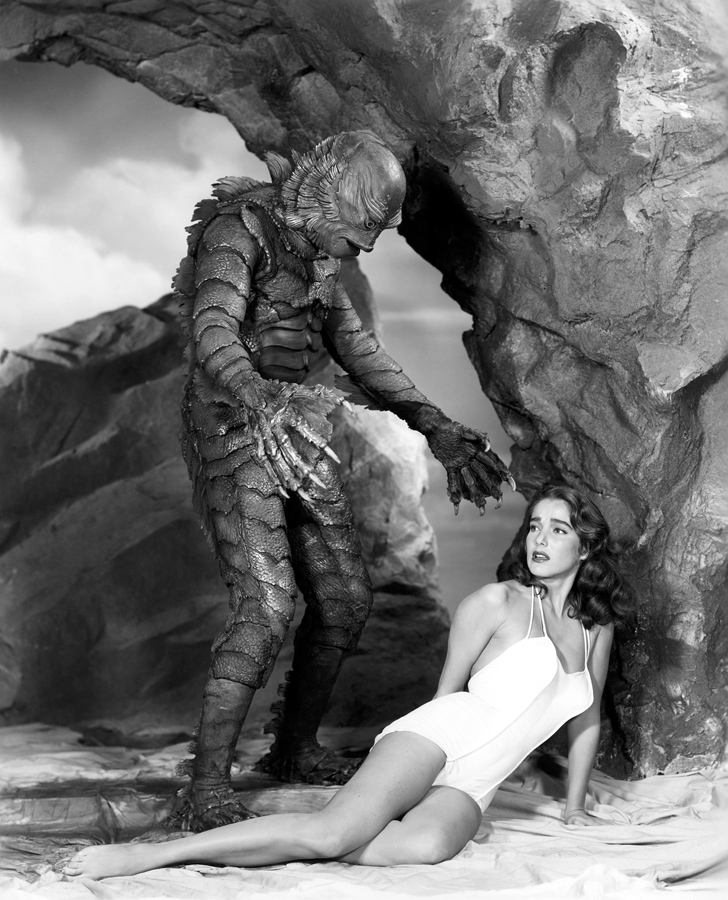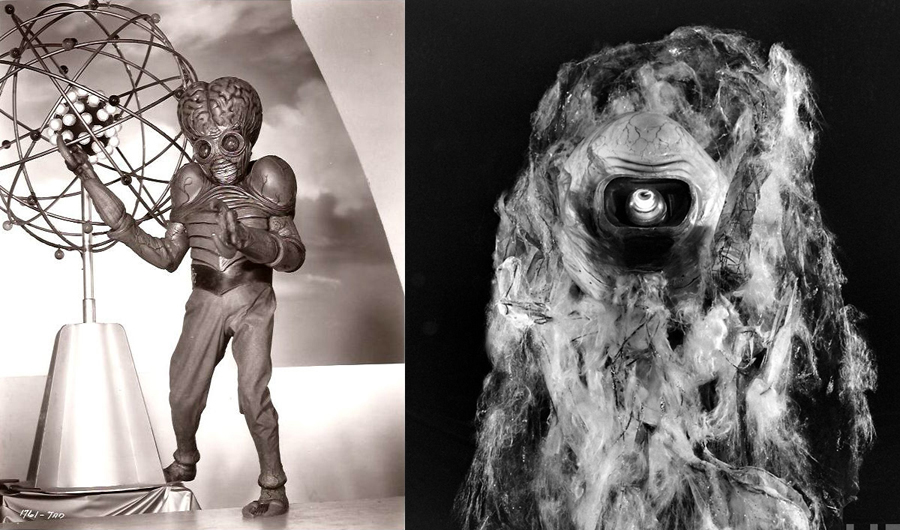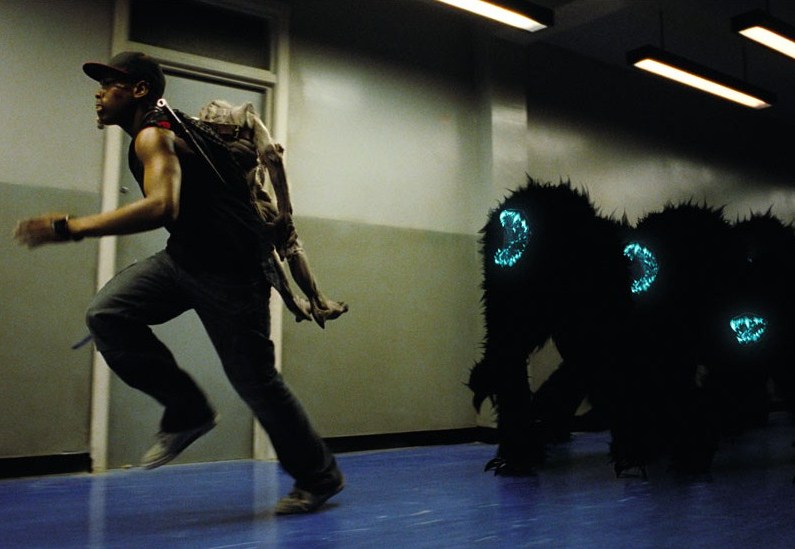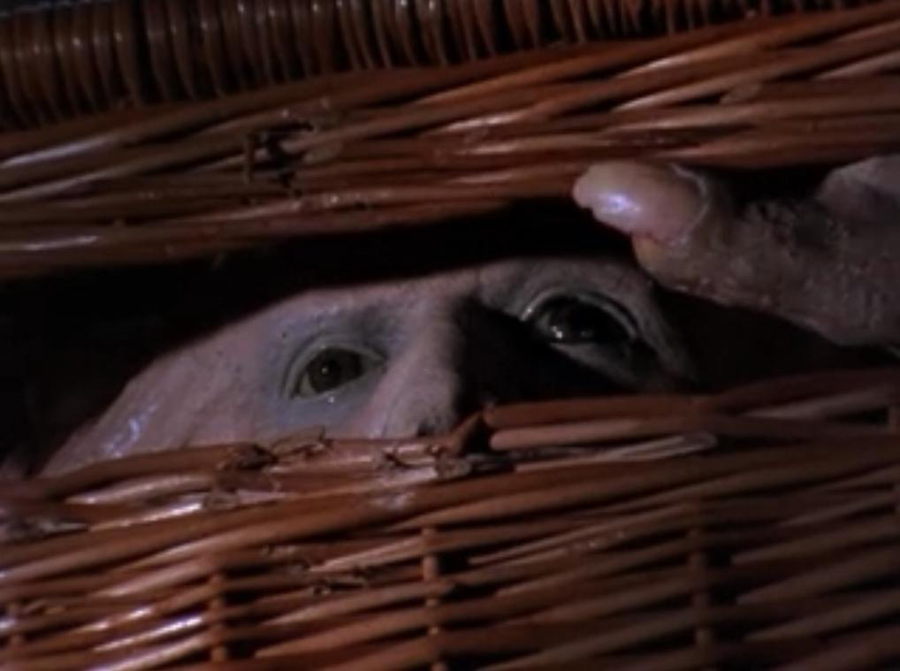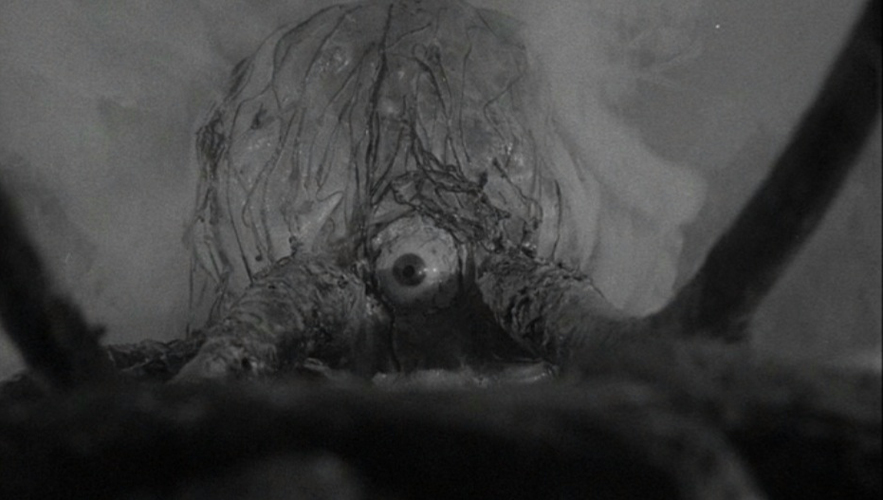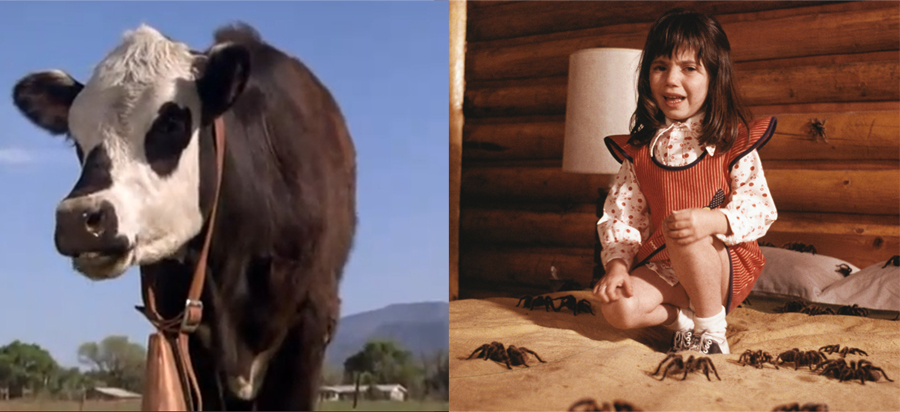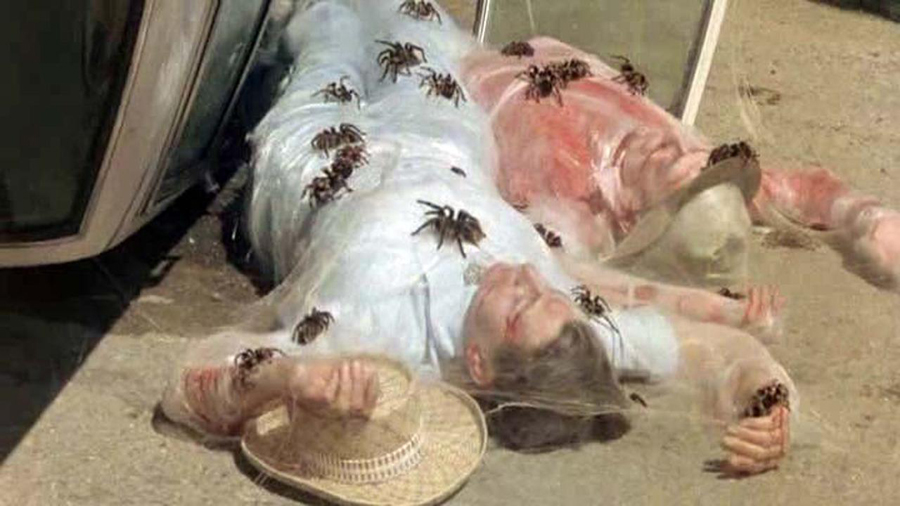Entering the ninth month of My Year of Horror I didn’t think I could bear another vengeful ghost lying in wait to say “boo” nor another arterial spray from a suffering teen so I turned to Mother Nature. Her labor pains have produced armies of children to strike out against humanity. She has, at least according to Hollywood, given birth to giant bugs, angry birds, armies of arachnids and a crush of aliens of all kinds. Unless we can look at these cautionary tales as guidebooks for avoiding her wrath, Mother Nature is probably going to stomp us out.
The horror films of each generation reflect the dominant fears of the time. In the 1950’s swarms of massive, nuclear bugs marched from LA to cinemas across America. Nuclear power was still new and Hollywood capitalized on the fear its unknown effects. In successive generations, Hollywood has found new ways to motivate nature’s revenge, adding or subtracting chemical agents, space exploration and/or misguided science with a healthy dose of human folly. The basic formula is one part male hero, one part attractive, female scientist and one part resistant government / business / criminal element.
It almost seems a cheat to include The Birds (1963) here. Its flaws and weaknesses have been discussed in longer forums than this monthly series permits me, but that’s why it’s here. It simply fits the bill (sorry) as an exceptional film in the genre. It also sends the tropes of the genre flying on new wings. There’s no pseudo-scientific mumbo jumbo but there is a strong-willed lead female, her heroic love-interest and the resistance of a small town – partly represented by the hero’s domineering mother.
You know the plot: the birds are sick of us. We have no idea why but these angry birds are pecking out eyes and pooping on Tippi Hendren’s perfectly smart suit (by the great Edith Head.)
If you haven’t seen it, where have you been? If you have seen it, watch it again if only for the scene in which Jessica Tandy discovers a neighbor’s corpse. What Hitch does with this discovery is a sequence to rival the shower scene in Psycho.
For a bit of accidental camp, there’s a moment during the attack on the diner when Ms. Hedren is asked to make 4 distinct faces of horror as Hitch cuts between her and a spreading fire. It’s perfectly ridiculous and almost spoils one of the film’s highlights.
But, oh, that ending! I once debated with a friend of a friend who said, “The movie has no ending.” So much for those who need everything spelled out for them. The final frames of the film are chilling … and even a little sadistic.
The rest of the films in this month’s line-up sort of have to compete with Hitch. That may be unfair. So I’ll start with the most meretricious.
~~~
Them! (1954) – This flick about giant ants is the queen bee of big bug movies. And like other films of the genre, relies heavily on the notion that scientists, doctors and authority figures are always right – that is, when they’re not completely misguided (as in Tarantula.)
Produced for Warner Brothers, the film stars James Whitmore, Edmund Gwenn (Santa in Miracle on 34th Street), Joan Weldon and James Arness, well-known to horror fans as The Thing from Another World (1951). Its success was followed, like an army of ants at a picnic, by imitators from other studios marching toward a feast.
The mystery of Them begins somewhere in the New Mexico desert. (Hopefully you’re putting two and two together since I’ve already mentioned radioactivity.) A little girl is discovered alive near the remnants of her family’s vacation trailer. Her family missing and the trailer destroyed, the girl is in a state of shock. It’s a terrific opener and climaxes when the girl is drawn out of near-catatonia by an entomologist Dr. Medford (Gwenn) whose theory is the film’s raison d’être. The girl’s reaction to a substance called “formic acid” re-affirms the scientist’s suspicion but when his lovely daughter (also an entomologist, natch) bumps into a giant ant, Medford’s suspicions are confirmed. Joan Weldon, by the way, plays Medford’s lovely daughter.
The monsters are wisely kept out of sight for the first half of the film. Them received an Oscar nod for Best Special Effects and they (them?) are things of appreciable monster movie beauty, impressive even if they seem quaint to a 2013 crowd weaned on CGI (which can look equally phony.) I wonder how the monstrous, irradiated ants from this classic appeared to 1954 movie-goers? The technicians, who built them, like the artisans of Creature from the Black Lagoon, deserve credit for their massive undertaking.
Sci-fi horror in our world-weary age has to work harder to lure us in but Them is enjoyable for being a solid early genre pic – and the first in a string of derivatives like The Deadly Mantis, The Black Scorpion and Tarantula which all have their own merits as well.
~~~
The Call of Cthulhu (2005) is a little, indie gem based on H.P. Lovecraft’s definitive story about an ancient evil lying in wait beneath the sea. Lovecraft’s fragmented narrative is like a Chinese box, with each piece of the story uncovering another alarming element until the climactic meeting with a monster so horrific the mere mention of his name causes madness.
If it’s true that the unknown is more terrifying that the monster exposed, Lovecraft knew how to get the blood pumping; he built-in a layer of dread to raise the tide of anticipation by re-upping the levels of fear and madness experienced by each storyteller until the big reveal. The monster, Cthulhu, is beyond human comprehension and director Andrew Leman uses ingeniously stylized art direction and the silent film format to awaken the subconscious. I’ll admit, silent movies aren’t everyone’s idea of a good time but this film is an inspired realization of Lovecraft’s nearly-impossible descriptions.
When The Man (Matt Foyer), our narrator, begins piecing together the mysteries of his grand-uncle’s madness and death, we are treated to a murderous cult, a series of horror stories surrounding artifacts, journals and papers, and a web of characters with impossibly similar nightmares. These disparate clues lead The Man on a sea voyage where the last “box” is opened – one final tale of terror on the high seas which is the source of the narrator’s own insanity – and the final revelation of the titular monster.
The movie is ingeniously crafted on a micro-budget, using simple technology to great effect. The “ocean” is constructed of fabric, glitter and elbow grease making the sea undulate. The sky looks to be loosely pieced cotton balls and works beautifully. Lovecraft’s tentacled leviathan, depicted in stop-motion, recalls Ray Harryhausen but its combination with art direction and stylized acting makes the film more frightening than you might imagine. Highly recommended.
~~~
Creature from the Black Lagoon (1954) I remember Universal’s B-movie classic as a battle of man vs. monster but unlike the purely carnivorous great white star of Jaws, Creature’s creature has needs beyond food. This movie is about what lies beneath the surface.
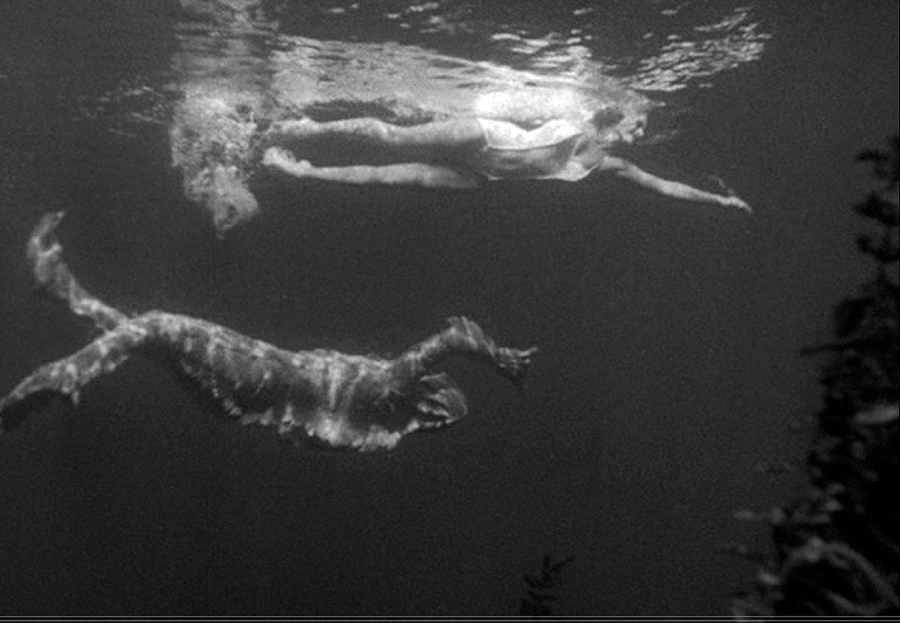
Julia Adams and the gill man (Ricou Browning underwater.) The gill man was played by Ben Chapman on dry land.
The plot is simple: a bunch of scientists travel to the Amazon in search of the find of the century. They stumble onto the lair of the gill man, a creature with a link to our evolutionary past. Cue murder and mayhem – and the creature’s infatuation with the lovely female scientist (who, thanks to 1950’s Hollywood, never once picks up a beaker, a magnifying glass or microscope.) The creature goes from monster to awkward Romeo, to pitiable captive before regaining his power and absconding with his prize.
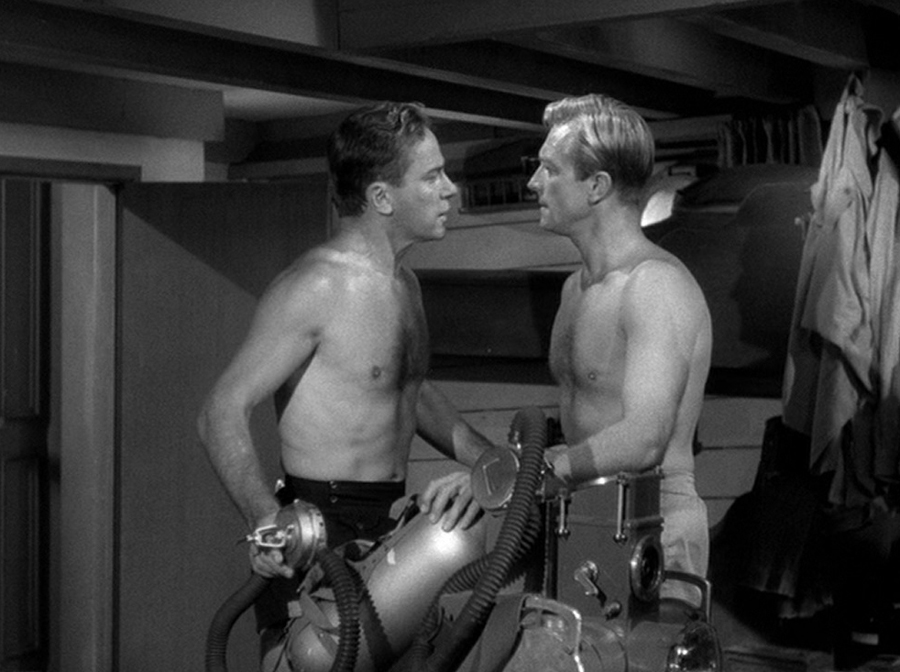
Cock of the walk: two Dicks (Richard Carlson and Richard Denning) fight over their female colleague .
Julia Adams (also credited as Julie) makes a fine heroine, giving a very good performance as a marine biologist who accidentally swims into the creature’s current. She’s a bit more than a damsel in distress though the scuba diving and heavy, scientific lifting go to the shirtless, marine biologists who are rivals for her affection. (Thank you for the beefcake.) Instead donning a regulator and diving mask, Ms. Adams takes a dip in a weirdly placid Amazon, showing off her “racy” white, one-piece which met with censor objection due to the high cut of the thigh. Ms. Adams’ great gams don’t go unnoticed by the the gill man (played by two different actors: one by land and one by sea) and the result is an underwater pas de deux which floods the film with innuendo and subliminal sex.
If my review sounds like a lot of sexist objectification, I should defend myself by telling you there’s a LOT of bare flesh in this movie, both male and female. The gill man’s peek at our heroine is more poetry than peril. Waves of Beauty and the Best wash over the film well before this scene with both male leads strutting like cocks in a henhouse.
With limited special effects aside from the striking underwater photography, the most surprising aspect of Creature is its make-up and costume design. The monster is a thing of beauty even by today’s standards. Millicent Patrick designed the gill man for Universal Films, having been given parameters and a rough sketch by director Jack Arnold via make-up and special effects artist Bud Westmore, who had also contributed to the monster’s look.
But it was Ms. Patrick’s final vision which gave us the gill man we know today. When Westmore became angry at the overemphasis on Ms. Patrick’s contributions, he succeeding in derailing her career but not before she exercised her incredible creativity with two other sci-fi monsters: the Metaluna mutant from This Island Earth and the Xenomorph in It Came from Outer Space. However it came to pass, the the gill man is a masterful lesson in design for students of movie make-up. He is as iconic as Giger’s Alien, Frankenstein’s monster and Lugosi’s Dracula.
~~~
Attack the Block (2011) makes a good case for itself. In a cinematic sea of films like this, Joe Cornish’s take on the alien invasion genre gives us a coming-of-age story set in a public housing block – the UK equivalent of Section 8.
A gang of ne’er-do-wells, who spend Guy Fawkes’ Night thieving, piss off an invading alien species which proceeds to set upon their apartment block. Take it from there. Unlikely friendships are formed and the rough-and-tumble gang leader, the ironically-named Moses (John Boyega), learns a lesson about himself and about honor. The aliens aren’t particularly scary-looking but they are ferocious and I liked their solid black, eyeless bodies and glowing blue teeth.
These aliens are all ferocity, which makes them enough of a threat to warrant running and screaming by the cast. The young characters are asked to step into their courageousness and Moses must face his part in the disaster and make amends. A host of interesting secondary characters also keeps the plot’s formulaic familiarity from swallowing it.
Ultimately, it’s not a remarkable film but it is enjoyable for the chemistry and commitment of its cast and the care with which it has been made. And you know what else? Thank goodness for multi-racial casting. It seems to go on a lot more in the UK than in the US.
~~~
Basket Case (1982) is a schlock film about a fella and the mad, deformed creature he keeps in a basket no one seems very curious about. There’s a bit of low-budget pleasure to be had in this movie’s deliberate goofiness but after watching so many of these films I can only give so much slack.
Duane comes to New York City with a basket and a dream. After checking into an SRO, Duane goes about taking revenge on the doctors who did The Terrible Thing to him and to his companion, Belial of the basket, who communicates with Duane telepathically. When Duane starts to fall for a girl, Belial’s own sexual urges and jealousy threaten to drive the pair apart, putting Belial’s rage into the red zone.
There are no technical aspects to speak of: the movie is below low budget: like early John Waters but without the deliberate perversity. Well, I take that back, there is one moment when our dickless creature goes at it with a gal while his telepathic counterpart dreams of running all cock-bobbingly full frontal through the streets of New York. Duane dreams of Belial’s imaginary transformation into a full-figured fella. By this time we’ve seen Belial either as a foam-rubber hand puppet – looking all too much like someone put Sesame Street‘s Ernie into a panini press – or as a stop-motion figurine like a nightmare in the Davey and Goliath household.
I watched this for you. I don’t think I need to see it again.
~~~
The Trollenberg Terror (aka The Crawling Eye) (1958) is not a dizzying work of staggering genius. It requires that you turn a blind eye to the cheesy special effects – cheesy, even by B-picture standards. In the days of Creature Feature, this flick, known by its alternate title, was a staple of TV horror fests. Now it has largely disappeared from view.
I’ve usually got half an eye on camp value when it comes to B-movies and while we don’t get full Ed Wood, The Trollenberg Terror hits the bull’s-eye at least a few times. In no other film will you find radioactive, brain-eating aliens, a mind-reading sister act, zombie assassins, tumbling mountain climbers, and Forrest Tucker all together in an avalanche-proof observatory in the Swiss Alps. (Say that three times fast.)
Mysterious happenings are happening on one of the most popular mountains near Trollenberg. “Something in the mist” (to quote Frank Darabont’s adaptation of Stephen King’s The Mist) has got the locals all bug-eyed. When the aforementioned sister act stops off in Trollenberg along with a United Nations investigator (does the UN have investigators?) played by Mr. Tucker, things get REALLY weird. Not only does Tucker go misty-eyed over the elder sister (winningly played by Jennifer Jayne) but younger sister, Anne (an equally good Janet Munro) tunes in on broadcasts to her third eye.
Made by a UK production company, its original title hangs on to the mystery of what the monsters may be. The American title gives it away so I won’t be spoiling anything by telling you that these giant, eye monsters would give Amanda Seyfried a run for her money.
Despite the camp value, this film has some very good acting from its dedicated cast as well as decently developed characters – everyone plays it straight. You care about their plight, until the appearance of the giant, crawling eye-aliens (tentacles included). Well – let me rephrase – they’re models of giant crawling eyes with tentacles and they live in a radioactive mist. (John Carpenter’s The Fog uses a mist more effectively and Stephen King’s The Mist is an expansion of this film’s motif.) The climax is too easy but the events leading up to it are just peculiar enough to keep you looking for more.
I remember this movie fondly for the scene in which a genuinely terrible child actress is snatched from the jaws of the eye by Tucker in one of his many moments of heroic derring-do. I’m still not sure how the aliens get the heads off of people, since eyes don’t have teeth, but I’ll get back to you on that.
~~~
Kingdom of the Spiders (1977) – Any movie featuring thousands of real spiders has a built-in ick-factor that tips the scales in favor of its success. Kingdom of the Spiders, fondly remembered by fan-kids of the 70’s, has about as many shortcomings as specimens and wears out its promise with ludicrous opening murder – a spider attack on a prize cow – which is framed like a cross between a photo bomb and a derp.
Following the death of said cow, local vet Robert “Rack” Hansen (William Shatner) sends blood tests for analysis. Mercedes-driving arachnologist Diane Ashley (Tiffany Bolling) brings her findings directly to town: a high concentration of spider venom (sound familiar?). A spider community is discovered at a local farm, despite the normally cannibalistic disposition of the tarantulas who have instead bonded over meals of local pets and their owners.
Thousands of spiders, gathered for the shoot at $10/spider by Mexican immigrants, cover cows, extras and Shatner. Enough spiders were killed during the making of the film (sometimes on camera) that it nearly makes this movie difficult to watch. Despite their shiver-inducing physiognomy, tarantulas are delicate creatures and fractures to their exoskeletons can mean death. Spiders are tossed, dropped and thrown to the ground, burned, crushed underfoot and under tire – mostly on camera for the sake of drama. PETA would have a field day.
Only slightly better than a TV movie, Kingdom barely gets by with a serviceable script and game actors who, during filming, suffered a lot of skin irritation from the spiders’ urticating bristles (the fur spiders scrape off their abdomens as a defense.) Bolling, in one scene, has to handle a spider as if she is an expert and does an admirable job though if you watch closely you can see her hands shaking.
You get the sense that she wanted to get it right on the first take.

